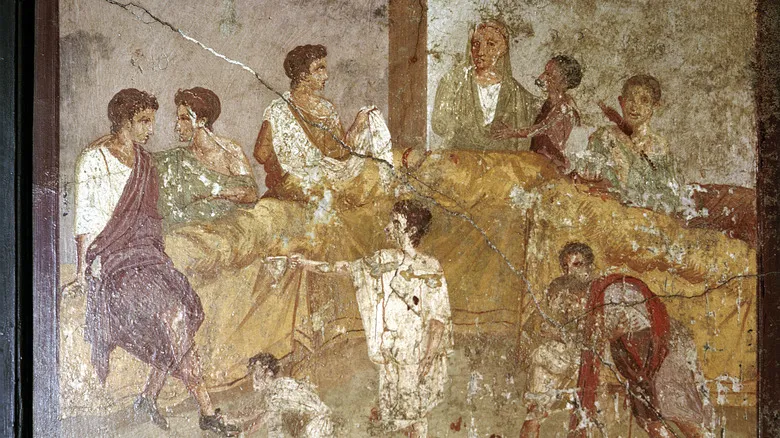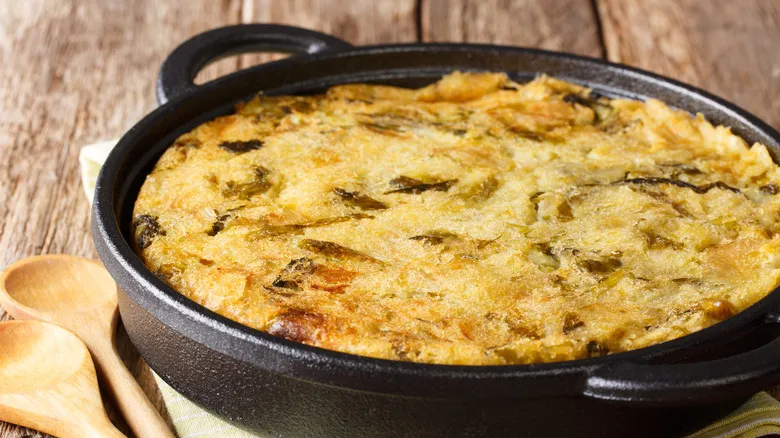Ancient Romans served spiced eggs at dinner parties

The ancient Romans established numerous culinary traditions that continue to be observed today, from salad dressings to birthday cake baking. While they cannot be credited with creating the Caesar salad, they did, in a way, pioneer the concept of deviled eggs.
In ancient Rome, serving eggs to guests was a common practice and a mark of good hospitality. There’s even a saying that encapsulates this tradition: "Ab ovo usque ad mala," which translates to "from the egg to the apples." According to Merriam-Webster, the poet Horace coined this phrase to illustrate how meals began with eggs and concluded with fruit. This initial course typically featured boiled eggs—sometimes mashed in a manner akin to egg salad—accompanied by flavorful sauces made from honey and garum, a fermented fish sauce.
While many Romans did serve spiced eggs at the beginning of their dinner gatherings, these dishes were quite different from the appetizers we know today. Were they seasoned and fittingly termed deviled? Yes. Were they stuffed in the same way? Not necessarily. One documented Roman egg dish appears in Gaius Petronius' renowned work "The Satyricon," written in the 1st century CE (via Gutenberg). Chapter 33 depicts an extravagant dinner party that includes a course of pea-hen's eggs wrapped in pastry dough, filled with "a fine fat fig-pecker, nestled in a yolk seasoned with pepper." Modern interpretations of this dish have likened it more to a chicken dumpling than a deviled egg, yet it is clear that flavorful egg dishes were a fundamental part of ancient feasts.
Modern deviled eggs first appeared in medieval Andalusia

Fortunately for fans of deviled eggs, the collapse of the Roman Empire in 476 CE did not lead to the disappearance of this beloved appetizer. In the centuries that followed, Hispano-Muslims residing in the Iberian Peninsula continued to enjoy spiced eggs, introducing new flavors and variations.
Stuffed eggs, resembling modern deviled eggs, emerged in 13th-century medieval Muslim cookbooks from the historical region of al-Andalus, now known as Spain. Only two of these texts have survived for translation, including three recipes: the Fadalat and "An Anonymous Andalusian Cookbook of the 13th Century." Both instruct to boil and peel the eggs, then cut them in half to scoop out the yolks. However, the seasoning recommendations differ. The Fadalat suggests using "ground salt in moderation, pepper, ginger, cinnamon, cloves, spikenard, and a touch of mastic or ... a bit of cilantro and mint water." The Anonymous Andalusian Cookbook offers two variations, both featuring cilantro and onion juice: one with pepper, coriander, oil, salt, and murri (a fishy, umami-rich condiment in Arab cuisine akin to Roman garum), and the other with cinnamon and saffron. The stuffed eggs were then coated in flour, fried in fresh oil, and garnished with spices before serving.
While the ingredients for medieval Andalusian deviled eggs varied, the technique of filling eggs with a well-seasoned yolk remains a culinary tradition today. Perhaps we should take a cue from these 800-year-old recipes—how about trying fried deviled eggs?
Recommended

Here's What It Takes To Become A Michelin Star Inspector

What Is Bubble And Squeak? The Classic British Dish Explained

Brazilian Lemonade Is The Creamy Citrus Drink That Requires No Juicing

How The Chicago-Style Hot Dog Was Born
Next up

